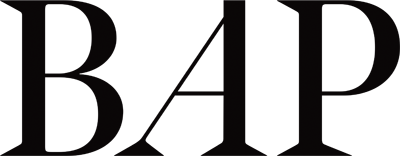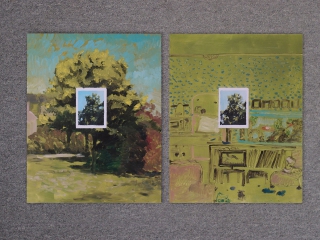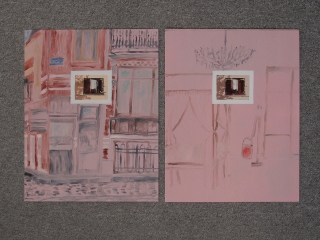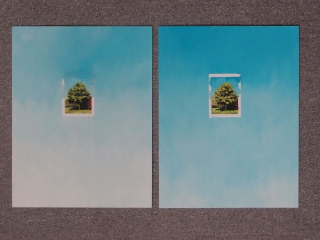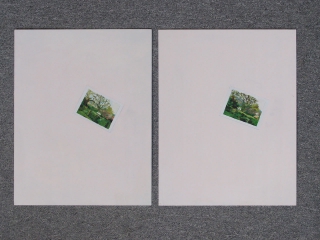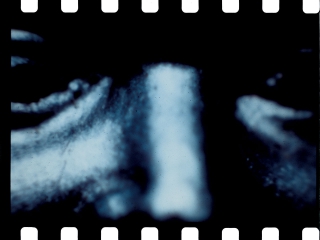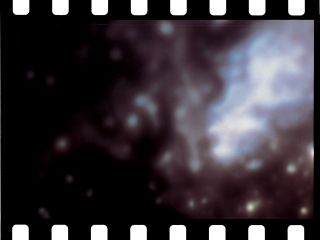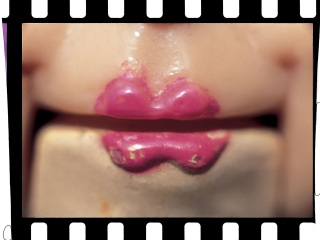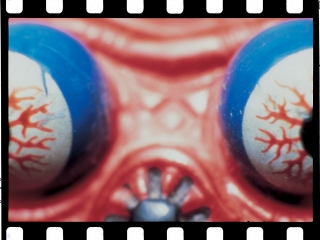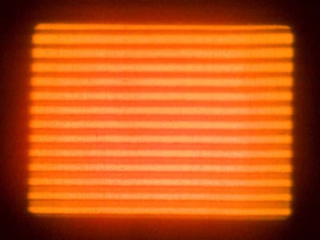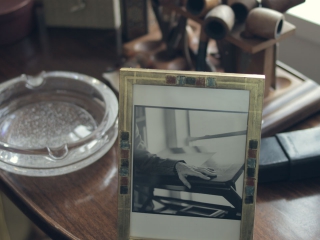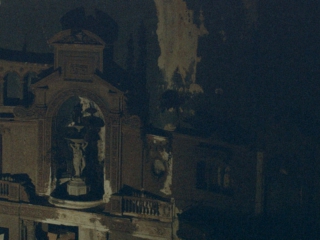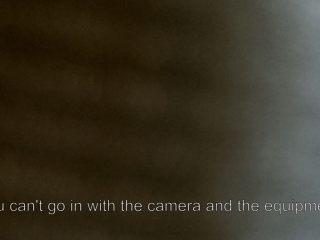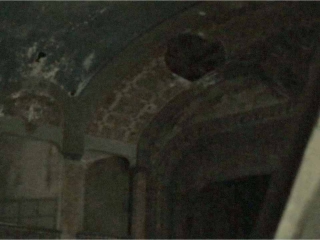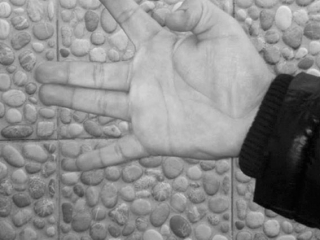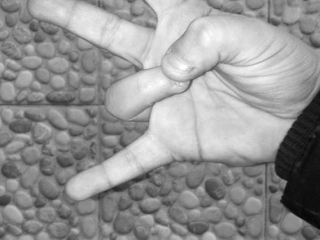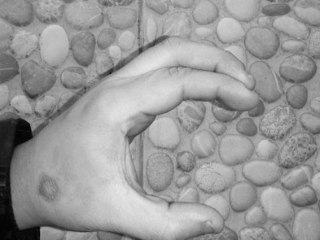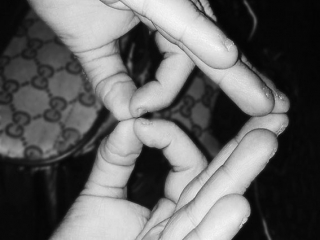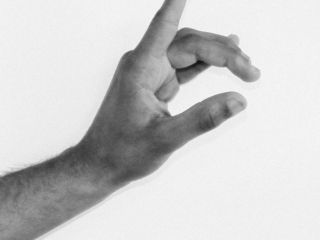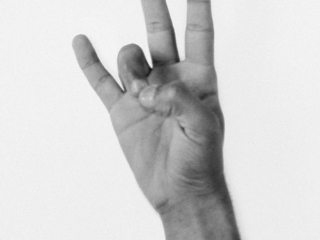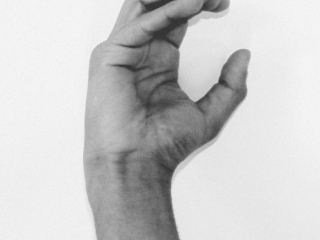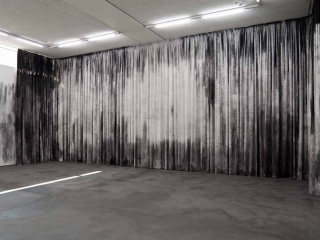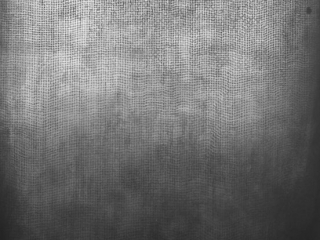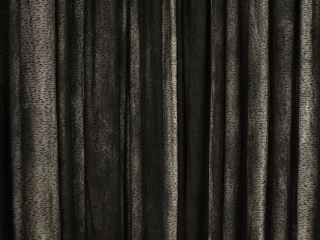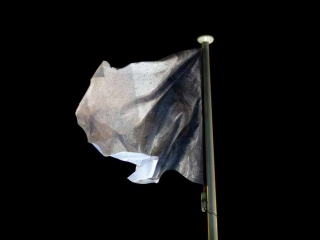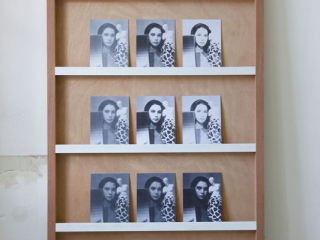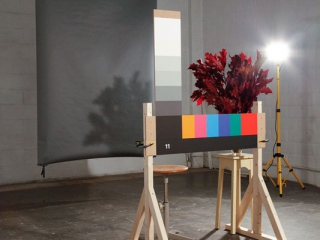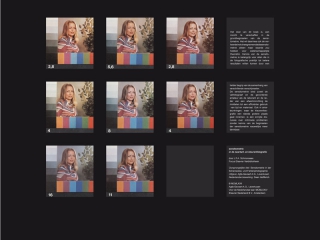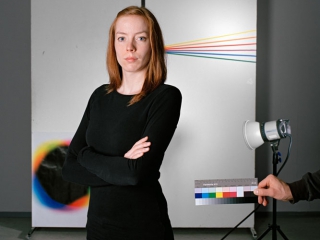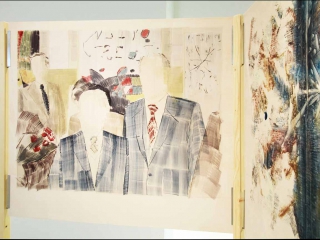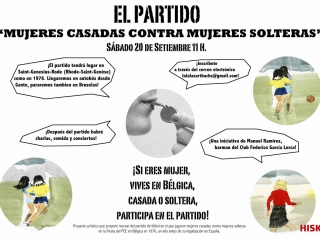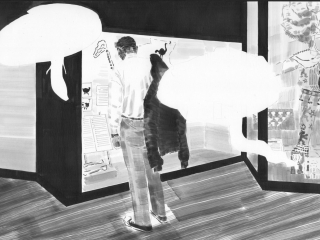2015
Emmanuel Van der Auwera – LANGUI PRIZE 2015
Laureate LANGUI PRIZE 2015
Emmanuel Van der Auwera makes videos, photos and installations with which he unravels notions such as making the invisible visible, the void, loss or emptiness. A cryptic perception of reality emerges from the political, historical or scientific context and references which he includes in his work. The things he interacts with are on the verge of change. Engaged in metamorphosis they are phenomena which question the multiple dimensions of reality. They produce situations in which the logic is deconstructed and laid bare as they invite us to reflect on our relationship with the world. Perception undoubtedly undergoes a paradigm shift at the hand of virtual worlds and new communication technologies, thus producing a new strangeness in many aspects of our interaction with the world and with others.
Here Van der Auwera presents the 2013 film A Certain Amount of Clarity (30 min.). The film consists of video messages which are posted on the internet. Each video shows a teenager and his/her emotional reactions while watching a film of an authentic murder on YouTube. The emotions vary from morbid passion to horror, doubt and curiosity. As spectators we do not have access to any images of the original crime scene, but just the reactions it elicited. In the editing Van der Auwera alternated facial expressions full of horror with re-enactments and accounts delivered with the emotion of a testimony in court, provoking an increasingly oppressive tension.
Van der Auwera has created a publication for the exhibition. It has the format of a newspaper in which the story of the film, A Certain Amount of Clarity, is laid out like a rage comic. These small, grimy strip cartoons found on the internet are intentionally provocative and extremely popular with young people. In a rage comic beauty is reduced to a minimum.
Emmanuelle Quertain – CROWET YOUNG BELGIAN ART PRIZE 2015
Laureate CROWET YOUNG BELGIAN ART PRIZE 2015
For Emmanuelle Quertain painting is all about clinging onto a contradiction. You begin something which you know almost nothing about, and yet you do this thing called painting without knowing what the final result will be. Since modernism, the traditional way of making a painting has been lost. Some painters such as Quertain feel that art is no longer lurking in technical knowledge but should reflect the artist’s view of the world.
In the Centre for Fine Arts Quertain experiments with the fragile boundary between the painting and the space. She exhibits a sort of collection of samples in which she uses her most conclusive colours in the relationship between the painting and the exhibition space. This leads to paintings which are presented in diptych and show a same photographic space each time placed in an indoor and outdoor environment. Everything bathes in the same colour, whatever the context. Quertain uses all sorts of artificial nuances, to associate her paintings with the spaciousness of the halls. She leads your gaze to notions of warmth and cold, neutral or tinted. You are brought to the point where the eye links the painting and the space. At that aesthetic moment you see the space and the works with fresh eyes.
Floris Vanhoof
Floris Vanhoof is interested in the hybrid form of music, photo and film. Projections and music produced by a modular synthesizer are central to his work. His first projections were 16 mm celluloid experimental films which evolved into pure visual experiences in which he questions viewing patterns. His work is rooted in structural film and early electronic music.
Vanhoof creates his own instruments and installations and explores the grey area between image (film or slides) and light (projection). As a media-archaeologist, Floris Vanhoof confronts the digitally discriminating visitor with flickering 16 mm films and slide installations, formats whose days are numbered. He deliberately choses analogue technology, not for nostalgic reasons, but because he wants to experiment with what used to be known as ‘high-tech’. His work also consists of new technologies such as microprocessors. Technology is not an end in itself but a means of exploring images, ideas and sound in a poetic way.
Wih Stripes Vanhoof applies the ‘phasing’ technique to film. Steve Reich and Brian Eno used this technique in their music with tape recorders. In his work endless variations of overlapping horizontal stripes projected by 16 mm projectors cause a special optical effect. In his second installation Vanhoof uses four slide projectors as, with the aid of a series of photos of monstrously enlarged heads, he draws your attention to the process of looking itself. With this he experiments with the persistence of vision, with macro-images and with the grain of the film. Just like the previous installation, in which the stripes are at times sharp and then blurred and influence our eye muscles, this installation also brings about an interaction with your body and your perception.
Hamza Halloubi
In his video creations Hamza Halloubi works on the idea of travelling images. How difficult is it to create something? What is the dividing line between fiction and documentary? Halloubi is fascinated by the space between these two genres. In his work he creates a story that is somewhere between the personal and collective memory. It is a personal view of an event, with a subjective approach which questions the official view. Halloubi is also interested in the grammar and semiotics of film and language. In his films he develops an aesthetic in which he attempts to combine the internal poetry of human encounters with a conceptual approach.
Here Halloubi is presenting three new projects. Ivre à Tunis is a book that the artist made for the exhibition. It is made up of short texts and pictures extracted from a video with a night scene in which a young man is celebrating as the dictator Ben Ali flees the desert city. The video installation Late is about the intellectual Edward Said and the notion of ‘Late Style’ that he reflects on. This video work is an artistic view of a writer’s intellectual journey. It is a visual and musical composition with images from an opera in ruin in New York. The voices that you hear are those of the artist and of Mariam Said, the intellectual’s widow. Passage is a video that was filmed in Jerusalem. For most parts the camera is in Halloubi’s pocket as he visits the Al-Aqsa Mosque in the old centre of the city. This almost abstract image, with sounds of the city and the call to prayer of the muezzin in the background, transforms the ordinary walk into a mystical image of the journey that was made.
Hana Miletic – BOZAR PRIZE 2015
Laureate BOZAR PRIZE 2015
Hana Miletić uses street photography as a catalyst to create publications, performances and installations. In her work she takes a critical look at social and political issues in European cities. She mainly concentrates on a careful (re)presentation of immigrant stories. Miletić is constantly looking for new ways to introduce exchanges and collaborations in her artistic process.
Miletić has collaborated with La Frénétick – a collective of young Brussels rappers – for four years now. During this collaboration she explored the experimental potential of poetry and hip-hop. In the Centre for Fine Arts she organises daily live readings from the poetry book Tenir Paroles. This collection is based on song lyrics by La Frénétick. Every day the verses are read aloud by a different individual who reacts to his or her individual social context through stylized forms of language. She has set up a reading and listening space where the visitor can listen to the poetry readings or read the poetry book in between the readings. At BOZAR Miletić is seeking a way to share the space and time resources of an art institution. She is also making an audio-recording of La Frénétick performing in one of the concert halls. This recording will be released as a single and presented to the public with a live performance at the award ceremony during the closing event of the exhibition.
Every day, there is a reading at 2 pm or at 7 pm during the nocturnes on Thursday. (No nocturnes between 21/07 > 15/08).
See here the timetable of the readings.
Hannelore Van Dijck
In her charcoal drawings Hannelore Van Dijck devotes herself to an investigation of surfaces. The deep black of the charcoal is delicate and fragile. The temporary nature of the drawing brings out the poetic qualities of the fragile drawing material. By not pursuing preservation, the drawing is possessed with an ultimate vulnerability.
Van Dijck focuses on the setting. The close contact with the material is her way of seeking spaciousness, light and structures. In hushed and straightforward compositions she explores the tension between detail and the bigger picture, in which the detail creates a feeling of reality and intimacy. She tries to create a new type of space with drawings which fill the whole space thereby reinterpreting the original architecture of the site. The image processes the inherent qualities of the given surroundings. Van Dijck uses this to make something new, a space within a space with its own distinct experience. The viewer is pulled into the image.
In recent times Van Dijck has concentrated on ‘liminal’ spaces, the space as a transition, as a grey area; spaces in which movement occurs. For the Young Belgian Art Prize, Van Dijck proposes a work that has been made specifically for the Centre for Fine Arts. In it she looks at the architecture of the exhibition space and considers the experience of the visit as a walking route which touches and changes you as though it were a rite of passage. With the tunnel that she creates she isolates a passage of the walking route through the Centre for Fine Arts thus elevating the walk to the status of a work of art.
Katrin Kamrau
Katrin Kamrau doesn’t just collect objects, prints and photos. She arranges them in the space so that you as a spectator are challenged to dwell on the use of these images in the media and society of the past and today.
In the work SPEKTRUM*objekt18(portrait)II (2014) you can see 43 portraits which each contain too small or too large a percentage of yellow (Y) or magenta (M). These prints are based on the schematic representation of a colour diagram from the book The Joy of Photography (Eastman Kodak Company, Addison-Wesley Publishing Company, 1979). In analogue times the photographer used a similar technique in order to make photos that are as neutral as possible at a high speed. For Kamrau this is an expression of a typical Western way of thinking.
She also brings this thinking pattern to light in SPEKTRUM*shelf (2013). Six shelves with photos each focus on a different parameter of photography: time, the observer’s gaze, the observation, the light, the composition etc. If you take a look at the whole you can see that the photographer exercises a certain amount of power over the person who is standing in front of the camera.
Just like in the SPEKTRUM* series themes such as social relations, balances of power, networks and role models are interwoven with the printed images of her most recent work Testreihe I – VI (2015). In this series Kamrau stages various compositions of proof images as an interactive setting of a photo studio in the exhibition space. You can go and stand in the same place as the model in the original photograph. So Kamrau doesn’t just involve you in the artwork, she also lets you be a part of it.
Lola Lasurt
The Spanish artist Lola Lasurt is interested in the recent past. She looks for ways to productively engage with the idea of ‘nostalgia’ through a critical and open approach to the past. At BOZAR she is exhibiting three works which are spread out throughout the whole exhibition.
In the Bertouille Rotunda The Match (2014) recreates the football match in which married women played against single ones at the Spanish communist party’s annual celebration in 1976, a year before it was recognised as a legal political party. Typically for Lasurt the work is at the crossroads between her personal interest (here emancipation) and common interests.
Quite a way further on in the exhibition you come across the comic book A Visit to the CP Nel Museum with Mo. Mo is the South African cartoonist Mogorosi Motshumi (°1955), one of the main exponents of South African comic strip in the last years of Apartheid. Lasurt and Motshumi got to know each other during an art residency at Greatmore Art Studios in Cape Town. They stayed in touch by sending each other letters in the traditional way. In his correspondence Motshumi teaches Lasurt how to deal with the specific language of comic strips. Some of the texts in the comic book she edited for the Young Belgian Art Prize are fragments of their written exchanges. In the exhibition Lasurt also presents a series of lithographs which were printed at the Frans Masereel Centre in Kasterlee where Lasurt also worked as artist in residence. These lithographies are enlarged fragments of drawings which she made for the book.
The video installation Double Authorization (2014) arises from the intersection of two stories linked to commemoration in public spaces. The first story refers to the moves and copies made of a monument dedicated to the anarchist and pedagogue Francesc Ferrer i Guàrdia. In 1911 the monument was built on Place Sainte-Catherine in Brussels and in 1990 a copy appeared in Barcelona. The central video projection shows the simultaneous flower commemoration in the two cities and daily life around the monument. The other story is about the name change of a square in Mont-roig del Camp. In 1979 the Plaça del Generalísimo Franco was renamed Plaça de Joan Miró.
Max Pinckers & Michiel Burger
The photographers Max Pinckers and Michiel Burger are collaborating on a project that came about in the London Archive of Modern Conflict (AMC), a private archive and publisher which invites artists to work with its collection. Pinckers and Burger were inspired by a collection of British propaganda material about the Mau Mau uprising, a military conflict and controversial episode from Kenyan history that took place in British Kenya between 1952 and 1960.
For Pinckers and Burger, images are always politically charged, directly or indirectly, through the very nature of their visual language. The installation in the Centre for Fine Arts and the accompanying photobook (still in progress) show a body of images made up of different parts and which enter into dialogue with one another.
The work is situated between two conflicting strategies: the colonial propaganda and the contemporary Kenyan representation of the Mau Mau, which are nonetheless based on Western iconography. In the British propaganda, the Mau Mau were portrayed as beasts. That contrasts with the contemporary Kenyan depiction of the Mau Mau as highly-regarded freedom fighters. With these two extreme poles as a starting point the duo displays visual interpretations of a period of history that has been greatly tarnished as a result of ideology. They assess the influence which images can have and their manipulative power to shape history. Finally you also get to see pictures which Pinckers and Burger recently made and collected in Kenya.
The artists’ intention is not to give a truthful representation of the subject or shed light on moments from Kenyan history but by recontextualising and manipulating them they want to analyse the meaning of the images within a carefully defined framework. At the same time they attempt to provide deeper insight into the possibilities of representing a subject.

